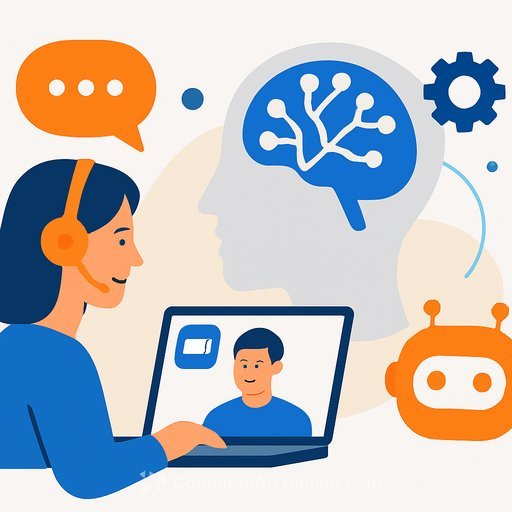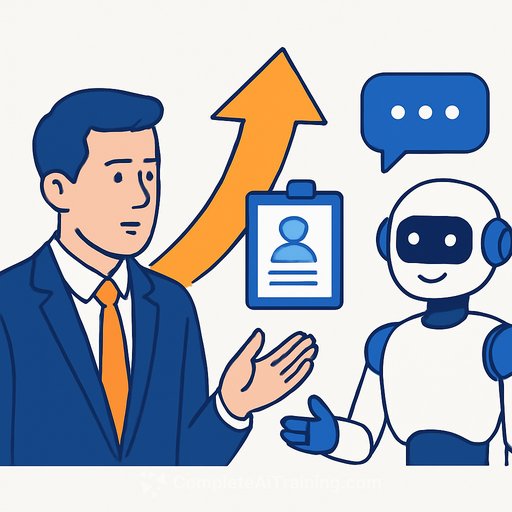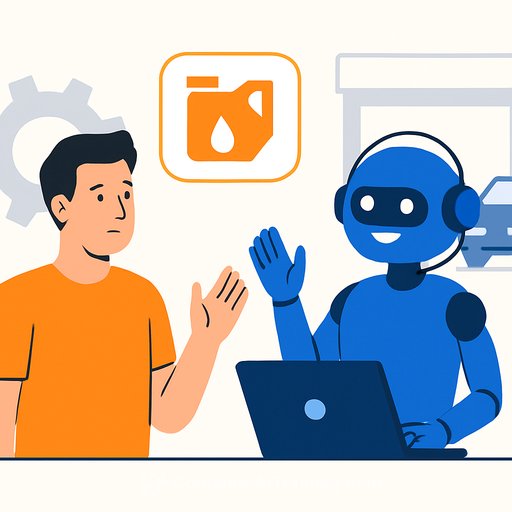UK Customers Still Prefer Human Support Over AI - Unless It Lowers Prices
Oct 16, 2025 - New 8x8 Streetview survey data shows the UK's center of gravity is still human-first in customer service. 83% of respondents prefer speaking to a real person, while just 4% prefer a virtual agent or chatbot. That preference softens if there's a financial benefit: more than 30% would accept AI-driven interactions if it meant lower prices.
For customer support leaders, the signal is clear: keep humans front and center for moments that matter, use AI where it saves time or money, and be transparent about the trade-offs.
Key stats at a glance
- 83% of UK consumers prefer a human; 4% prefer a virtual agent/chatbot.
- For urgent issues, no UK region fell below 76% support for speaking to a person.
- Northern Ireland showed the highest support for virtual agents at almost 11%.
- Scotland and Wales were strongly pro-human at 90%.
- Among 16-24-year-olds, 7% preferred AI and 17% had no preference; AI support ticked up slightly for non-urgent issues.
- More than 30% would choose an organisation that lowers prices by automating with AI/chatbots.
- By gender: men 34% vs. women 28% in favour of AI when it reduces costs.
- By region: London 45%, Newcastle 39%, Wales 36% would accept AI for lower prices; only 20% of Scots would change preference.
- Replica voices: 43% opposed, 28% in favour. Most popular with 25-34-year-olds (48% in favour), least popular among 55+ (12%).
What this means for support leaders
Human contact is the default expectation, especially for urgent or emotionally charged issues. AI earns goodwill when it saves customers money or time, not when it blocks access to a person.
As one industry leader put it: "Customers still value a human touch - but they're also pragmatic. People will choose AI if it saves them time or money... The best contact centers today are using AI as a teammate, not as a substitute, helping humans work smarter."
Build a human-first, AI-assisted service model
- Prioritize urgency to people: Use intent detection and simple triage to route urgent, high-stakes contacts directly to senior agents.
- Deploy AI for the low-friction work: FAQs, order status, basic account changes, and proactive updates. Always offer a quick handoff to a person.
- Test price-based incentives: Pilot a small discount or loyalty perk for choosing an AI-first queue. Expect stronger uptake in London and major cities; set clear "talk to a person" escape hatches.
- Augment agents, don't replace them: Use AI for real-time guidance, summarisation, and after-contact work to reduce handle time without hurting CSAT.
- Measure channel by channel: Track CSAT/NPS, first contact resolution, deflection, AHT, and escalation rate for both human and AI paths. Compare like for like (issue severity, segment).
- Be transparent: Tell customers why you're offering an AI option (faster answers, lower prices) and what they can expect. Clarity builds trust.
- Use synthetic voices with care: Avoid cloning relatives by default. If you experiment, make it opt-in with clear consent, labeling, and an easy opt-out.
- Respect preferences: Let customers set channel preferences in their profile and honor them across touchpoints.
- Operational basics still win: Publish wait times, offer callbacks, and keep knowledge bases current so both agents and bots stay accurate.
Tooling considerations
If you're consolidating tech, a platform that combines unified communications, contact center, and CPaaS with embedded AI can reduce handoffs and data silos. The 8x8 platform integrates real-time assistance, analytics, and workflow automation to support agents and streamline customer journeys.
Learn more about the 8x8 platform.
Next steps for your team
- Audit your top 20 contact reasons and tag each by urgency/risk to set routing rules.
- Pilot AI on 1-2 simple journeys with a visible "talk to a person" option; track CSAT and deflection.
- Run a limited discount test for an AI-first queue in one region; compare cost-to-serve and customer sentiment.
- Stand up a clear consent policy for any synthetic voice use and label it explicitly in the IVR or chat.
- Upskill agents on AI-copilot workflows and prompt fundamentals to improve quality and speed.
Explore AI upskilling paths for customer support roles.
Why this matters
The data confirms what frontline teams feel every day: people want empathy and accountability for urgent problems, and they'll accept automation if it proves it can save them time or money. Build for both realities. Put humans where they count, and use AI to remove wait, reduce cost, and make every agent sharper.
Your membership also unlocks:






